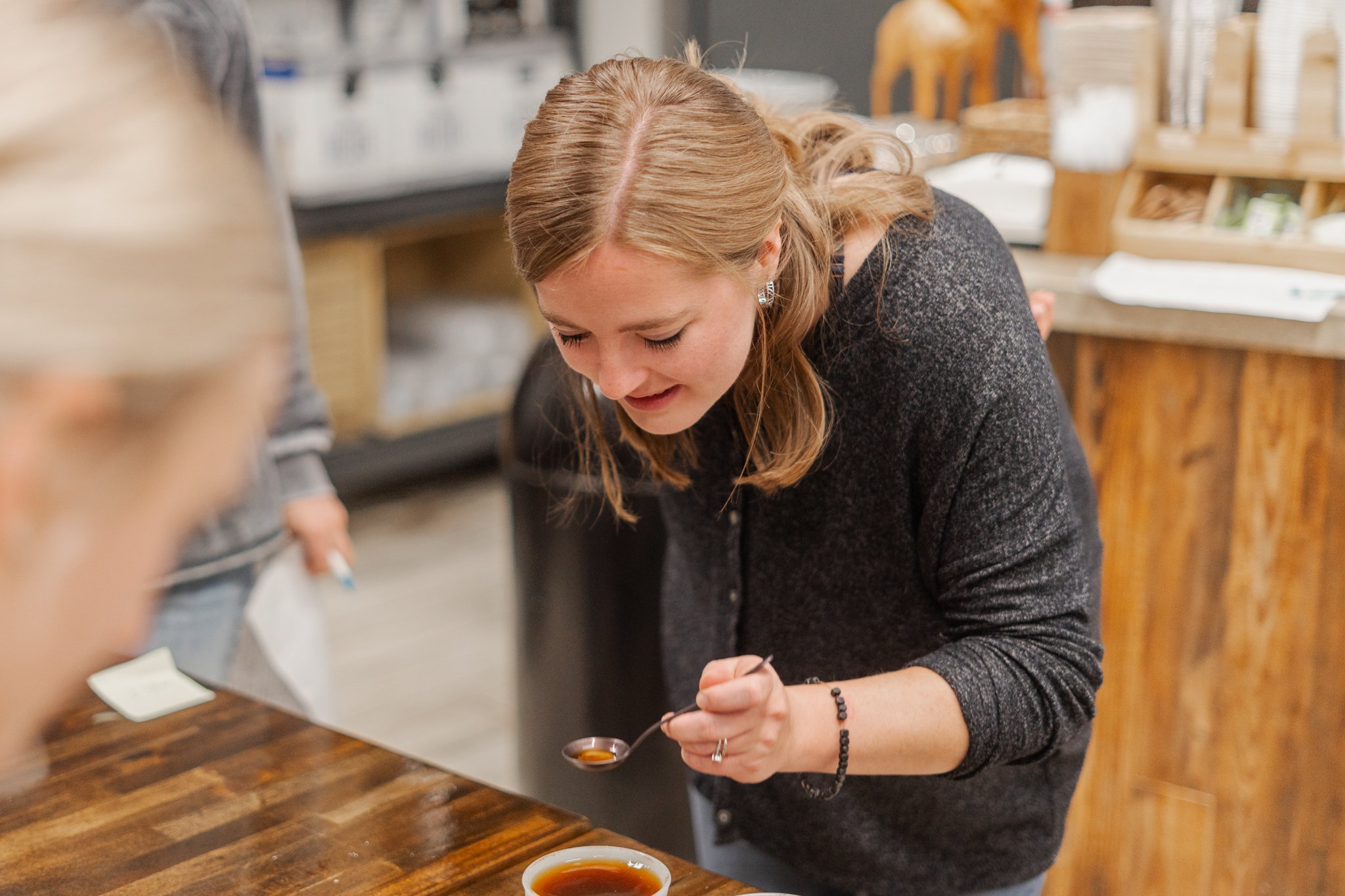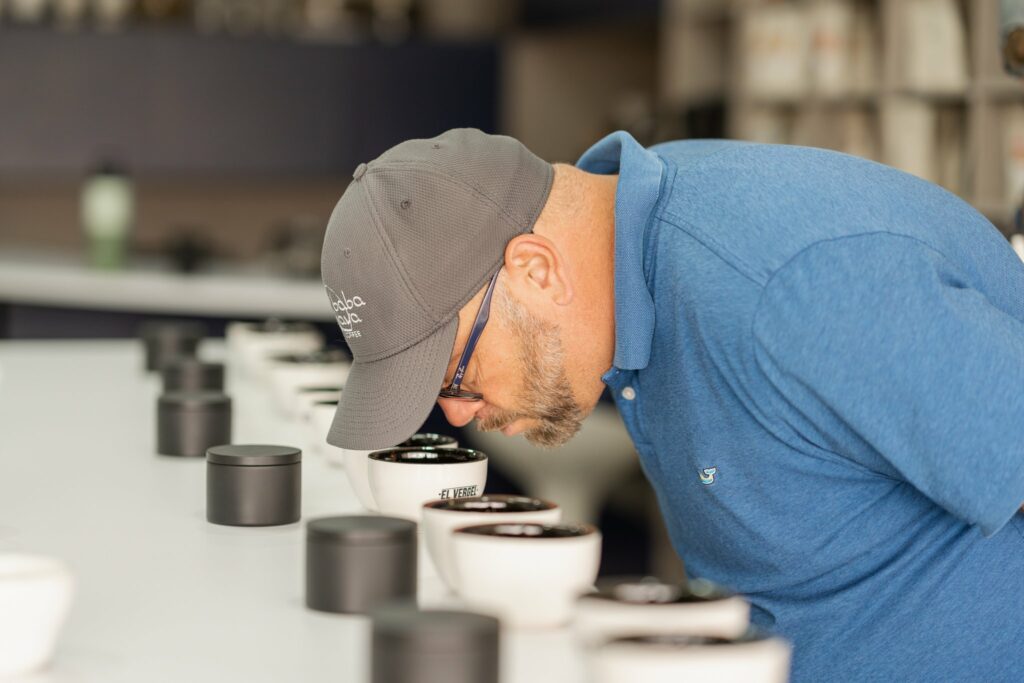
What is Coffee Cupping?
Coffee is a delicious drink enjoyed all around the world. It can be brewed in countless ways and enjoyed hot or cold, as is, or with cream and sugar. Roasting and brewing specialty coffee is all about fostering the natural flavor potential of high-quality coffee. But how do coffee professionals know if they have indeed fostered the highest potential of flavor in the coffee?
The History of Coffee Cupping
Coffee cupping has been used by merchants since the late 1800s to assess consistency and quality, but it has risen to significant prominence since the late 1900s to early 2000s. Cupping coffee is simply tasting and evaluating coffee. It is the process coffee professionals use to brew, smell, and taste different coffees. Cupping is a standardized process conducted by each contributor to the coffee supply chain: from producers to importers/exporters, roasters, and baristas. Coffee is cupped multiple times before it reaches the consumer.
Early on, producers, importers, and exporters usually taste their coffee to detect any defect in the bean. Then, roasters will roast and taste samples of that coffee. Baristas cup coffees to ensure quality. Coffee professionals cup coffee to determine if the coffee was processed well, determine what green coffee they want to purchase, or how to roast coffee. While the coffee that is sourced and how it is roasted immensely impact the flavor of the coffee—cupping is the practice that ensures consistency in tasting and evaluating those coffees.
Want to learn where coffee comes from? Start here!
How Does Coffee Cupping Work?
There is a standardized way of cupping coffee, and it is undeniably the best way to taste multiple coffees. Not only does cupping help detect any defects in the coffee, but it also helps us describe a coffee’s flavor. A specific amount of coffee is weighed out for each cupping bowl. Usually, there are 2-3 cupping bowls per coffee sample to prevent any unintentional impact on assessing the coffee. The coffee is ground and brewed in a fixed way. A particular amount of water, just off boil, is added to the ground coffee. The Specialty Coffee Association recommends a fixed ratio of coffee to water, which is 1:18. Depending on the cupping bowl size, this ratio should be used. All of this makes it uniform, consistent, and replicable.
This quantifiable and calculated approach to tasting and evaluating coffee sanctions consistency, the definition of flavor, and the assessment of the characteristics of the coffee being cupped.

Why Coffee Cupping?
Cupping coffee is a form of quality control. For producers, it’s ensuring this quality. For roasters, its cupping helps design and form roasts or make corrective changes to a roast profile. For baristas, it’s a way to stay knowledgeable about the coffee they are brewing and serving.
The point of cupping is to keep the brewing process simple to avoid any external flavor impact and treat each coffee equally. Cupping allows multiple coffee professionals to come together and blindly taste multiple coffees. It allows for a quantifiable assessment of acidity, sweetness, body, mouthfeel, flavor, and balance. These are the characteristics of a coffee that coffee professionals are looking for when they cup coffee samples.
How to Cup Coffee
Do you want to know how to taste coffee like an expert? Cupping or tasting coffee happens through your mouth and your nose. You’ll, of course, need coffee and cupping bowls, and among other things…a spoon!
What You’ll Need
- At least two different coffees
- Cupping bowls
- Scale
- Timer
- Grinder
- Kettle/hot water
- Spoon
Standard Method of Coffee Cupping
- Heat the kettle to a boil.
- Grind coffees at the same setting, a bit finer than for your average single-cup pour-over
- Smell the fragrance of the ground coffee.
- Now, add your water just off boil to fill the cupping bowl (1:16 – 1:18 coffee to water ratio). Let it steep for four minutes.
- The layer of grounds floating at the top is called the “crust.” Stir the crust gently back and forth a few times, smelling the aroma.
- Use two spoons to remove the crust gently.
- Once the coffee is cooled, grab your spoon.
- Slurp a small sip of coffee aggressively enough to coat the entirety of your tongue as best you can.
- Do this while it is hot, again when it is warm, and again when it is cooled.
No, slurping your coffee while cupping is not essential. However, it is helpful and can be a lot of fun! Cupping is the industry’s standard for tasting and evaluating the delicious coffee you drink daily. Cupping can be done easily at home with these few simple steps. This method helps us assess the intricacies of how excellent coffee can be. Cheers!
All of our coffee is roasted in-house! Shop our single origins and blends today
